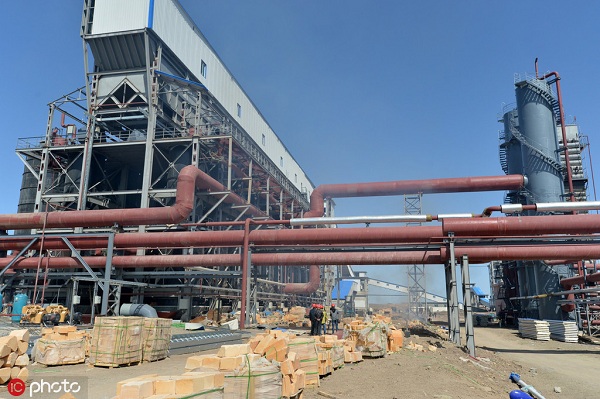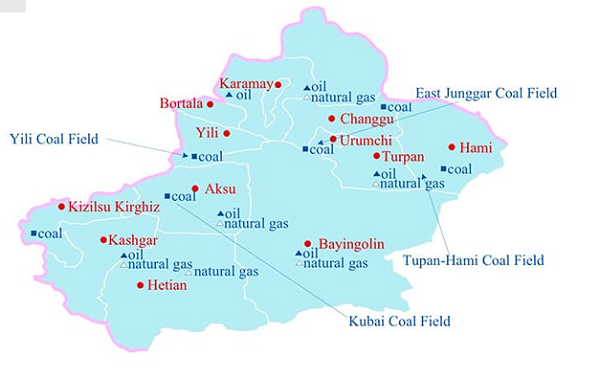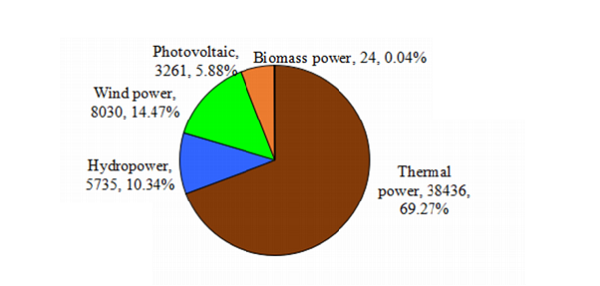Energy industry

[Photo/IC]
Located in the northwest of China and with an area of 1.66 million square kilometers, Xinjiang Uygur Autonomous Region has long been in a particularly important position in China’s energy strategy.
Xinjiang is not only an important energy source for China in the 21st century, but also a channel connecting China with Russia and other central Asian countries. Therefore, promoting the development of the energy industry in Xinjiang is of vital significance for the economic and social development of the region.
Xinjiang is considered by geologists to have the most potential of all provinces for oil and gas exploration in China. It has been listed as one of the five comprehensive strategic energy bases in China.
Total reserves of natural gas, coal, and other fossil resources in Xinjiang account for more than 20 percent of China’s energy reserves, ranking first among all provinces in the country. Xinjiang’s wind power and solar energy resources rank second, while its theoretical hydropower reserves rank fourth in the country.
There are 24 coal fields in Xinjiang with predicted resource reserves greater than 10 billion tons. Oil reserves in Xinjiang total 23.4 billion tons, and gas resources are roughly 13 trillion cubic meters, accounting for 23.3 percent of the entire onshore gas resources in China. Among them, Tarim and Turpan-Hami basins contain 20.9 billion tons of oil and 10.9 trillion cubic meters of gas, accounting for 25.5 percent and 27.9 percent of the total onshore oil and gas resources in China.
Apart from the abundant fossil fuel reserves of coal, oil and natural gas, Xinjiang also boasts wind energy and solar energy. In 2010, Xinjiang was listed among the nine wind power bases in China.
To achieve clean and sustainable development of the energy industry in Xinjiang, the state government places importance to the development of wind energy in Xinjiang. The state also supports wind farm construction in Hami and Dabancheng, and promotes the development of a national large-scale wind power base in Xinjiang.
The development of wind power in Xinjiang has been progressing rapidly since 2009. In 2013, the installed capacity of wind power grids overtook that of hydropower. By 2014, the grid capacity of wind power ranked first among potential renewable energy sources in Xinjiang.
In 2014, the cumulative power generation in Xinjiang increased by 30.16 percent. A wind power generation capacity of 135.47 kWh accounted for 6.89 percent of the total power generation in the area. The proportion of wind power in the total power generation of Xinjiang has maintained a good momentum of economic development. By 2014, the total installed capacity of power supply in Xinjiang reached 55486 MW, of which 14.47 percent came from wind power (8030 MW).
China advocates the concept of green and low-carbon development. Xinjiang is rich in renewable energy sources, and has considerable room for development. In the near future, the new energy industry in Xinjiang is expected to develop towards larger scale and more efficient utilization. The new energy industry will attain a dominant position in the local energy structure.
China proposes the Global Energy Internet Strategy and vigorously promotes the development and utilization of clean energy. With the help of this strategy, Xinjiang, as a core area in the Silk Road Economic Zone, will provide large-scale electricity distribution, actively participate in optimal energy allocation with the neighboring countries of China, and promote the sustainable development of its wind power industry.

The fossil energy distribution in Xinjiang [Photo/xinjiang.gov.cn]

The structure of the power assembly machine capacity in Xinjiang [Photo/xinjiang.gov.cn]